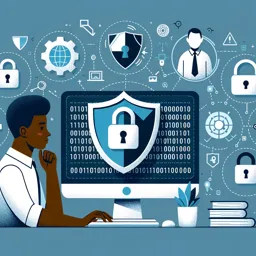What is Digital Forensics?
Digital forensics refers to the process of identifying, preserving, analyzing, and presenting digital evidence that is stored or transmitted in electronic formats. This practice is crucial in modern-day investigations, especially in cybercrimes, as it enables experts to uncover and trace digital footprints left behind by malicious actors.
The Importance of Digital Forensics in Cyber Security
As technology evolves, so do the methods used by cybercriminals. Digital forensics plays a vital role in the broader landscape of cyber security by helping organizations and authorities recover compromised data, trace the origins of security breaches, and support legal proceedings against offenders. Without digital forensics, prosecuting cybercrime would be significantly more challenging.
Common Phases in Digital Forensic Investigations
- Identification: Detecting potential sources of digital evidence and understanding the scope of the incident.
- Preservation: Securing and isolating evidence to prevent alteration, damage, or loss during investigation.
- Analysis: Carefully examining data using specialized forensic tools and techniques to find relevant evidence.
- Documentation: Recording every step and finding to ensure the evidence’s integrity for legal standards.
- Presentation: Exhibiting findings in clear, understandable terms for courts or organizational decision-makers.
Key Tools and Techniques in Digital Forensics
Digital forensic experts rely on a robust toolkit to extract and analyze electronic evidence. Popular tools include:
- Disk Imaging Software: Creates exact copies of storage devices for safe analysis.
- File Carving: Recovers deleted files by scanning disk sectors for file signatures.
- Network Analyzers: Monitors and records network traffic to trace unauthorized access or data breaches.
- Memory Forensics: Analyzes volatile data in RAM to detect malware or intrusion artifacts.
- Mobile Device Forensics: Recovers SMS, call logs, app data, and GPS data from smartphones and tablets.
Challenges in Digital Forensics
Despite its benefits, digital forensics faces significant challenges such as encrypted data, the volume and diversity of digital devices, anti-forensic techniques used by attackers, and issues surrounding privacy and legal admissibility. Investigators must continuously update their skills and tools to keep pace with technological trends and emerging threats.
Conclusion
Digital forensics is an indispensable discipline within cyber security and information technology. It ensures that critical evidence can be gathered and presented to counter cyber threats, support justice, and secure digital environments. With the continued rise of cybercrime, the demand for skilled digital forensic professionals remains high, making it a promising field for anyone interested in both technology and criminal investigation.





























